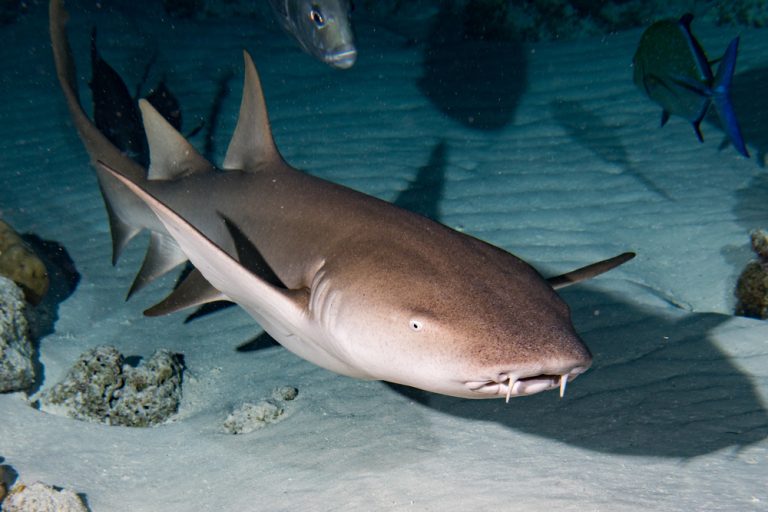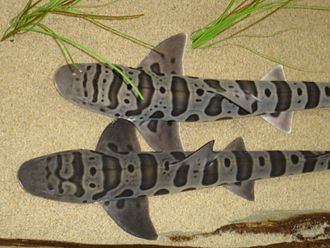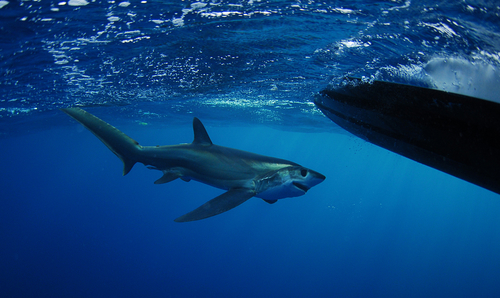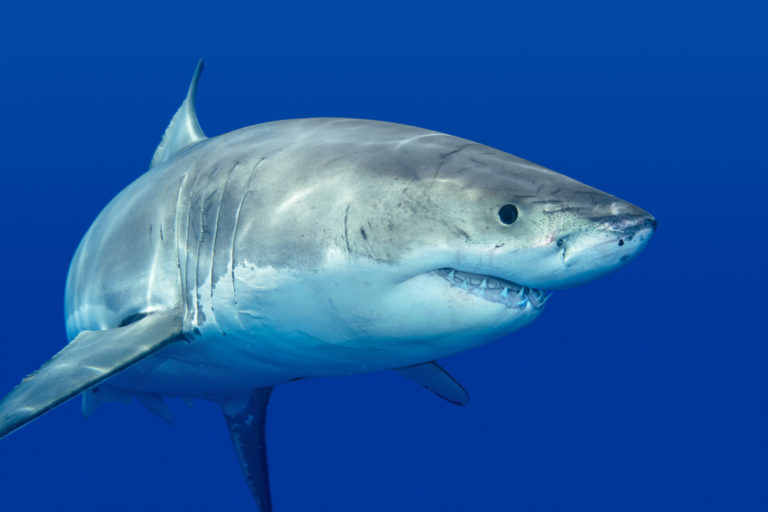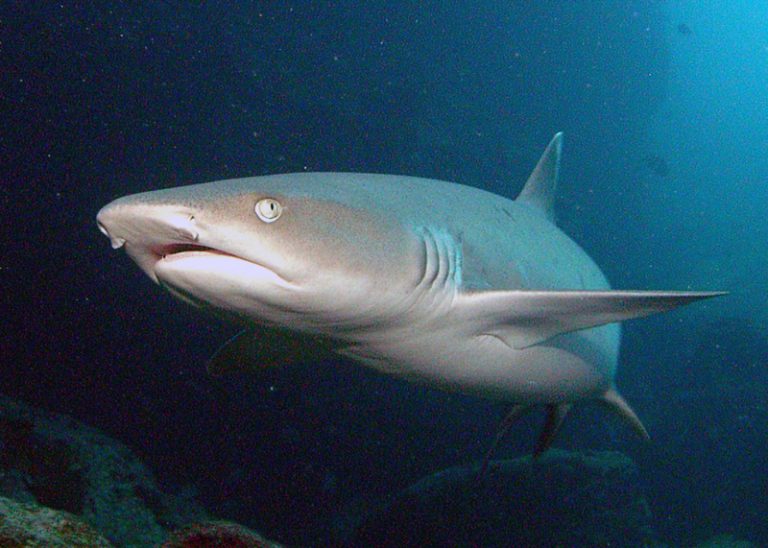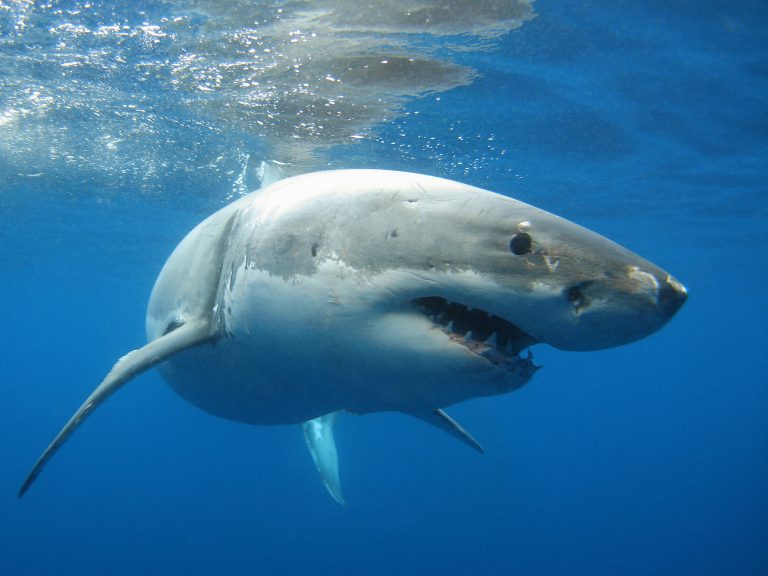Species Profile: The Port Jackson Shark
The Port Jackson shark is one of the few shark species that can breathe while motionless.
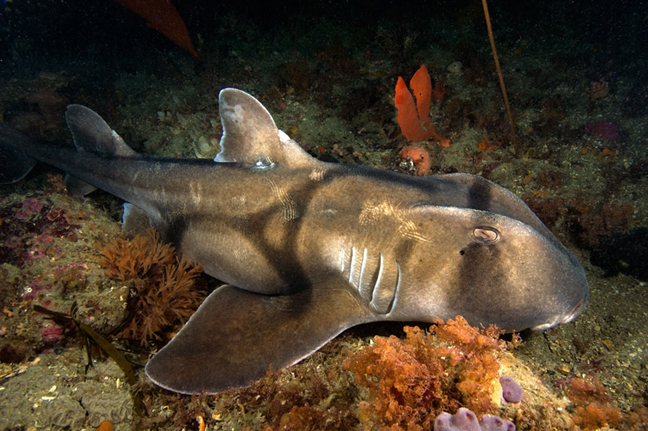
The Port Jackson shark is one of three Australian species belonging to the Heterodontid (bull-head) shark family. It’s actually the largest in body size of the group and is quite unmistakable with its broad forehead ridges, blunt forehead and almost pig-like snout.
As you may have guessed from its name, this shark is native to Australia: southern Australia to be precise, and is named after the beautiful Port Jackson Harbour in Sydney. This shark species has a light grey/brown body color with distinct dark brown harness-like markings. Also, it has prominent spines in front of each dorsal fin which are quite sharp in juveniles but become blunted as the shark ages.
This is a migratory species that travels south in summertime and returns to the north in winter to breed.
Fortunately, this shark is regarded of being of low importance to humans and it’s not engendered in any way. The IUCN lists it as Least Concern.
1) Scientific Name
Heterodontus Portusjacksoni
2) Scientific Classification:
- Kingdom: Animalia
- Phylum: Chordata
- Class: Chondrichthyes
- Order: Heterodontiformes
- Family: Heterodontidae
- Genus: Heterodontus
3) Life Expectancy
Though there is little information about the lifespan of this shark, its late maturity age suggest that it is relatively long-lived.
4) Average/Maximum Length
Adults grow to about 75 cm (2.5 feet) for males and 90 cm (3 feet) for females. Maximum length so far is 1.65 meters (5.5 feet) long.
5) Maximum Swimming Speed
Not documented.
6) Interaction With/Danger To Humans
The Port Jackson shark is quite hardy and does well even in captivity. As a result, a few aquariums keep it as a display animal. That aside, it’s of little interest to humans on a commercial level.
It isn’t endangered and its meat is not consumed. However, scientists may catch it to study the habits of other bottom-dwelling fish. In addition, it is often caught as bycatch though fishermen will send it back into the water in such cases.
There are no records of fatal attacks from this shark and it poses very little threat to people. Although, it can inflict very painful bites when defending itself.
7) Reproduction Details
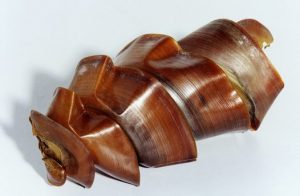
This shark species is oviparous and produces its offspring by laying eggs. They breed once a year starting from August to mid-November.
Females will lay their fertilized eggs every 10 – 14 days and the eggs are quite large, almost the size of the mother’s head!
Though the mother will take extreme care to hide her eggs, many will not survive to hatch. Most (over 85 percent) of the eggs are eaten by predators. Other sharks in the vicinity are a major culprit especially the crested horn shark. Those that survive hatch after 10 – 11 months and measure about 25 cm (10 inches) long.
Port Jackson sharks mature sexually at between ages 8 and 10 years old for the males, and 11 to 14 years old for the females.
These sharks segregate according to sex as soon as they reach maturity. Thus, they have male-only and female-only groups that only interact during mating season.
The empty cases from the hatched eggs often wash up on beaches and have been termed “mermaid purses” due to their interesting and extraordinary spiral shape and size.
8) Diet/Hunting Pattern Of The Port Jackson Shark
This shark has dentition that makes it very different from other sharks. Its front teeth are different from the back ones. The ones in front are small, sharp and very pointy while the back teeth are flat and broad.
This combination serves a dual purpose: the front teeth catch and hold prey while the blunt back teeth act like molars for crushing hard shells. Their preferred diet includes sea urchin, different species of small fish, and bottom-dwelling invertebrates like sea stars, worms, prawns, crabs, etc.
Port Jackson sharks are nocturnal and they feed at night. Unlike most other sharks, they don’t have to keep moving to breathe. Therefore, they are able to breathe while eating and also stay still for long periods of time.
This shark has a unique method of getting rid of unwanted food items: they just turn their stomachs inside out and spit the object in question out of their mouths.
9) Alternative Names
- Oyster Crusher
- Horn Sharks
- Tabbigaw
- Pigfish
- Bullhead
10) Population And Conservation Status
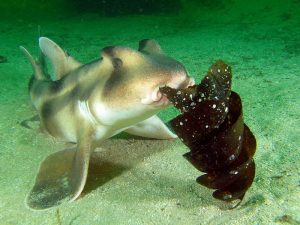
Although this shark is listed as Least Concern by the IUCN, the high mortality rate of its eggs to predators makes this fish vulnerable to any threats that may surface in the future.
There are no known predators of this species and they appear to defend themselves quite well with the sharp spine in their fins.
However, the great white shark and the broadnose sevengill shark are potential predators when their paths cross with this shark.
11) Ancestry And History
Genetic studies on the Port Jackson shark indicates that there are two distinct populations of this species. One population is found from Northeastern Victoria to Western Australia, and the second is found from Southern Queensland to New South Wales.
Also, this shark is believed to have it origins from somewhere off the coast of South Africa.
Its scientific name, Heterodontus portusjacksoni, comes from the Greek words heteros meaning ‘different’ and dont which means ‘tooth.’
12) Distribution And Habitat
The Port Jackson shark is native to the temperate waters around southern Australia. They swim from southern Queensland, to Tasmania, and on to the central coast of Western Australia.
There are unconfirmed reports of a few individuals being seen as far north as Western Australia’s York Sound. Even as far as New Zealand too though such sightings are doubtful.
Wherever they are found, they live at depths between 100 meters (330 feet) and 275 meters (902 feet). This is a benthic shark and as such it spends most of its time on or close to the sea bottom. It prefers rocky environments as well as sandy and muddy terrain too.
During the day, they will normally shelter in caves, flat areas, or rocky outcrops.
For now, populations of this shark still appear healthy, despite various fishing activities in its habitat.

